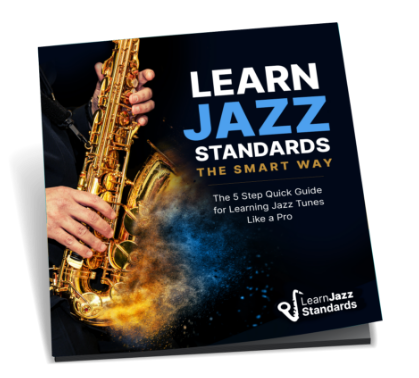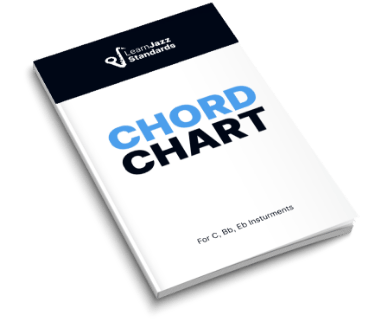Ah, the lead sheet.
Jazz musicians everywhere are familiar with the lead sheet. Lead sheets are no doubt useful tools for communicating the basic elements of a jazz tune or an original composition. In this sense, lead sheets help make the music easy to pick up, play, and share.
Charting out the harmony and melody of a tune or writing down an original composition in this simple format will make your life as a musician so much easier.
That’s why we will dive into lead sheets and review best practices for creating them. We’ll cover the following:
- What’s A Lead Sheet?
- What Jazz Musicians Need to Know About Lead Sheets
- How To Create Your Own Lead Sheets
- The History of Lead Sheets and the Real Book
While lead sheets are useful tools, they should never become a crutch. Though they are convenient ways to transmit your musical ideas to other musicians and can save you from bombing at a gig, they should never become a crutch.
If you are trying to hone your memory skills and exponentially expand your jazz tune repertoire, you must check out the Learn Jazz Standards Inner Circle. When you join, you’ll gain access to invaluable educational resources that will help you sharpen your playing skills and memorize tunes like a pro.
Come See What The Inner Circle Is All About.
Table of Contents
What’s A Lead Sheet?
A lead sheet is pretty straightforward: it’s a piece of music that shows a song’s melody and chord changes. It’s a basic blueprint that lets musicians play jazz songs they don’t know on the spot as long as they can read chord changes or music notation.
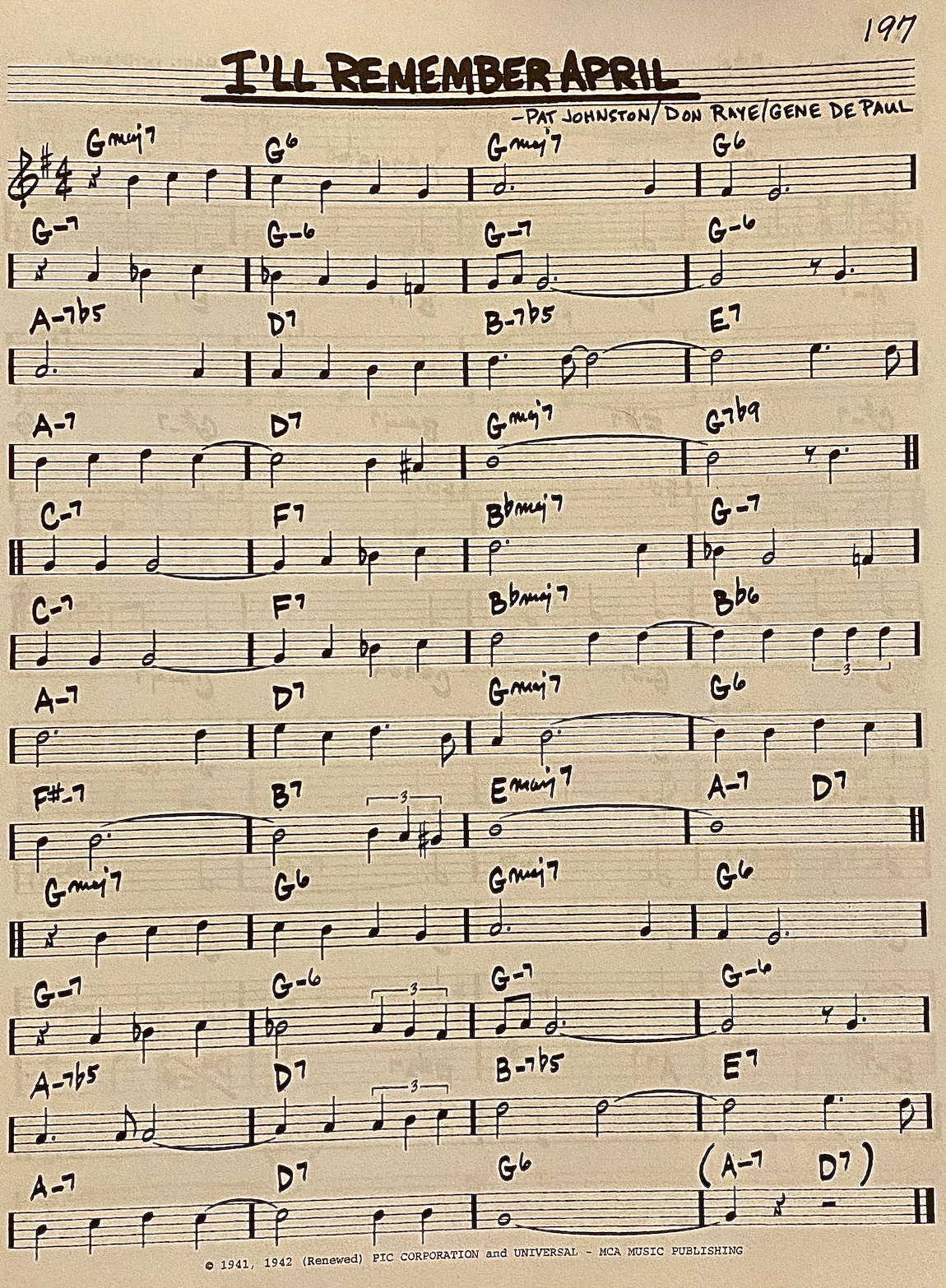
Essentially, a lead sheet is the skeleton of the song. It contains all the basic elements that make that song distinct from other jazz standards—the melody line and basic harmony (chord symbols). However, everything else regarding the music is open to interpretation.
Usually, a lead sheet is much simpler and more watered down than traditional sheet music, which usually consists of multiple parts and uses notes on the staff to spell out the chords.
What Jazz Musicians Need to Know About Lead Sheets
Whether you are a hobby player, music educator, or a working musician (or all three!), there are many practical reasons why you’d use a lead sheet.
Here’s what lead sheets can do for you:
- For the person playing the melody, a lead sheet gives them the basic melody notes to play. However, because the melody is stripped down, musicians will likely add or embellish it.
- For the rhythm section, a lead sheet provides the chords to play. However, chordal players have plenty of room to interpret chord changes as they see fit. There’s a great amount of freedom enjoyed by the piano, guitar, bass, and drums (or another instrument) when playing from a lead sheet.
- For soloists, the lead sheet tells them the jazz chords so they can improvise (as long as they can read chord symbols).
- Creating your own lead sheet lets you share your arrangements or transcriptions of classic tunes with other musicians.
- Additionally, by creating your own jazz lead sheet, you can easily share your jazz songs with other musicians when playing.
However, aspiring jazz musicians should not rely too heavily on lead sheets to learn jazz music itself! Jazz is an aural art form, and a lead sheet is a visual aid. You don’t drive primarily using your ears and shouldn’t learn jazz primarily with your eyes.
Two Different Methods To Create Your Own Lead Sheets:
1. Using Another Chart as a Reference
There’s no need to start from scratch if you can access an existing lead sheet. Checking the original sheet music or arrangement score to a tune can also be helpful. (I’m sure the copyright owners would appreciate that).
You want to be careful that your lead sheet accurately captures the tune. Listen closely to the rhythm, the chords, and how the melody is played. If you are making your own arrangement or chord reharmonization of an existing tune, you can also start from an existing version and make adjustments.
2. Transcribing A Song By Ear (Truly Creating Your Own Lead Sheet)
Making a lead sheet by ear is a fantastic way to solidify your knowledge of a song. Also, transcribing tunes and creating lead sheets for various songs will help develop your musical comprehension and listening skills.
Because a lead sheet consists of a melody line and chords, you must listen carefully to create an accurate copy. Creating a lead sheet for your favorite recording will:
- Test your ability to recognize rhythms and hear intervals when interpreting the melody.
- Test your musical comprehension of harmony when determining the notes used in chords (i.e., being able to hear the difference between dominant chords and minor 7th chords).
Steps To Create a Lead Sheet When Transcribing From Recordings:
Here are some steps to take when making lead sheets for jazz standards, pop, and other styles of music:
- Listen to multiple recordings and song performances to develop your approximate version of the harmony and melody.
- Try to get hold of a score or transcription of the original recording (or favorite recording) if possible.
- Listen to one of these versions over and over again. The first time through, focus on getting the form right. Then focus on building out the harmony. Then worry about the melody.
- Listen to the chords from the bottom note up when trying to transcribe chord changes. You don’t need to capture all the extensions, so long as you capture the chord quality up to the 7th. Often, the melody will be a chord extension.
- Err on the side of simplicity when transcribing the melody and chords.
- After doing your best to write out the chart by ear, you can check your work against an existing lead sheet.
Check out this video to learn the best practices for transcribing melodies by ear.
Check out this masterclass on how to hear chords. This will help you immensely when transcribing harmony.
Comparing different tune versions can also be helpful because they might differ in subtle or obvious ways. But remember, nothing beats listening to the music itself.
Best Practices When Formatting Your Lead Sheet
You’ll want to follow a few tips to ensure the page looks clean, the chord symbols are clear, and your notation is readable. Be sure to follow these tips:
Tip 1: Always Show Beat Three When Writing The Melody In Musical Notation
What example is easier to read?
This?

Or This?

BEFORE YOU CONTINUE...
If you struggle to play amazing jazz solos and want to learn the secret strategies the pros are using to improvise, our free guide will get you on the right track.

The melody must be written clearly so players can easily read the notes on the spot. To make reading easier for other musicians, it helps to show beat three in every measure, even if it means using a tie.
Visually locking on to beat 3 helps musicians orient themselves when reading unfamiliar tunes.
Tip 2: Always Stick To 4 Bars Per Measure When Possible
What example is easier to read?
This:
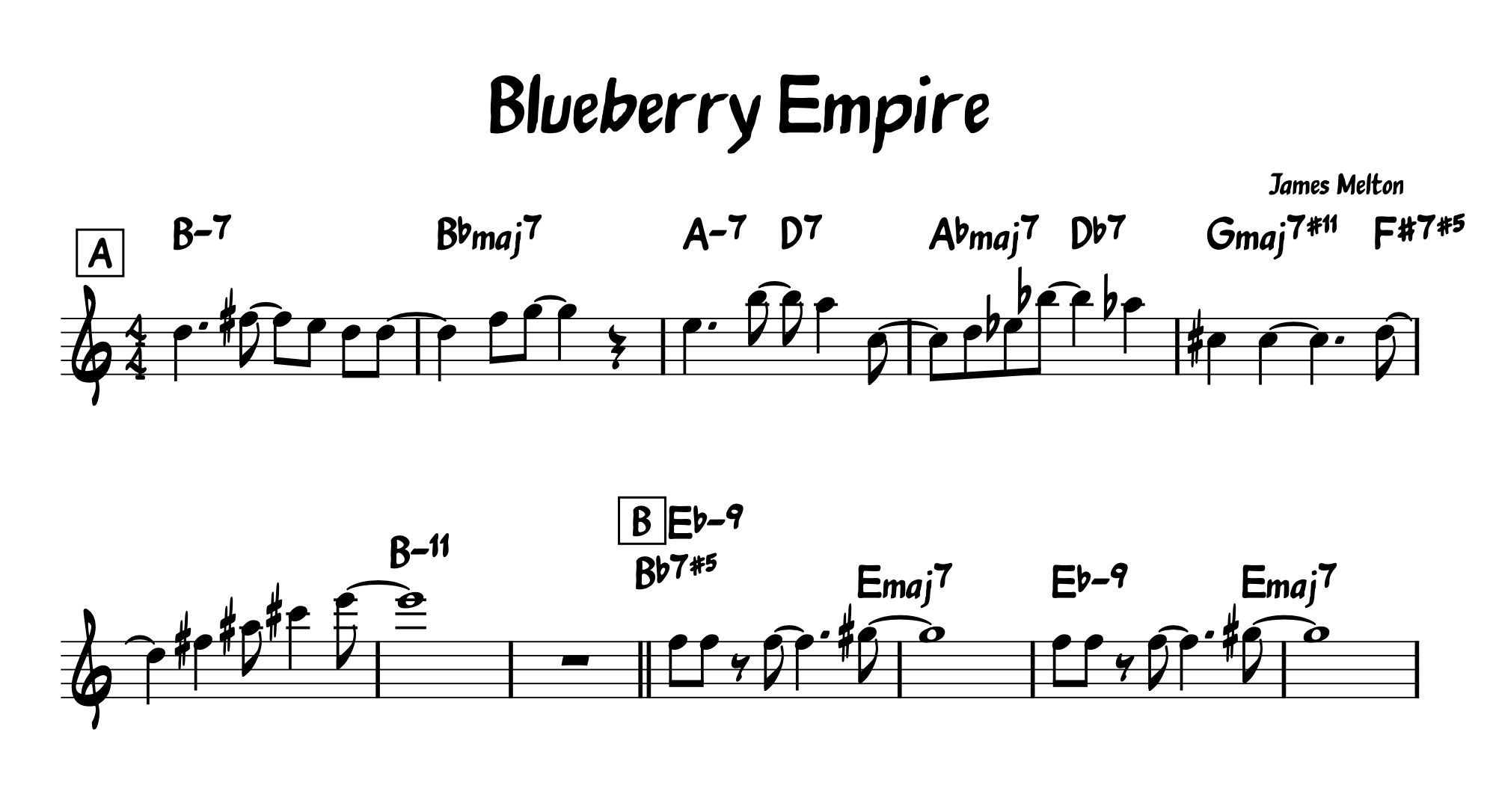
Or, this:
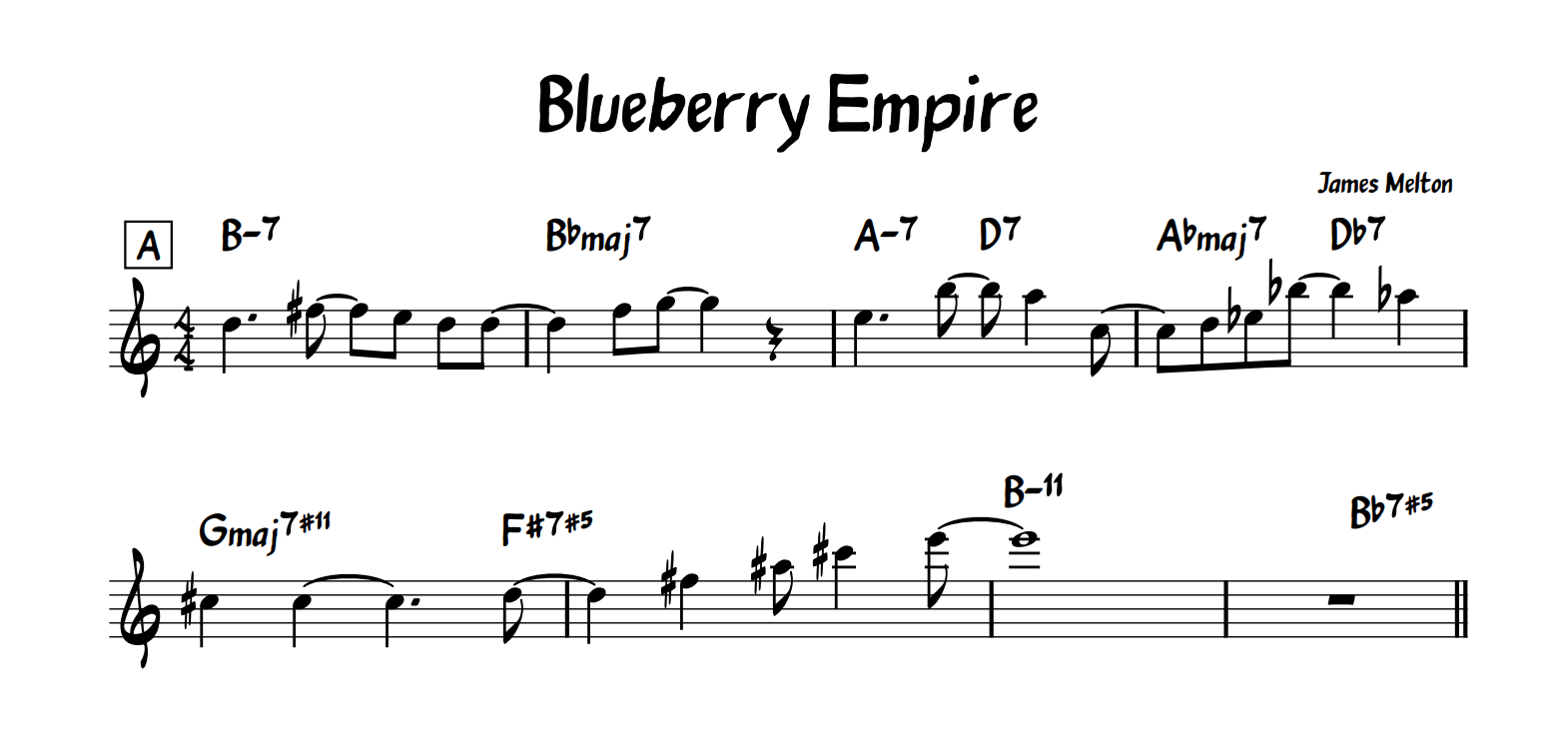
Your lead sheet flows better when you stick to 4 bars per system. Since music is usually broken into 8-bar sections, this makes reading your lead sheet much easier. Also, use section headers and double bar lines to mark where sections begin and end.
Tip 3: Make Sure Your Chord Symbols Are Big Enough
What example is easier to read? (Imagine you are in a dark club and don’t have a light on your music stand.)
This:
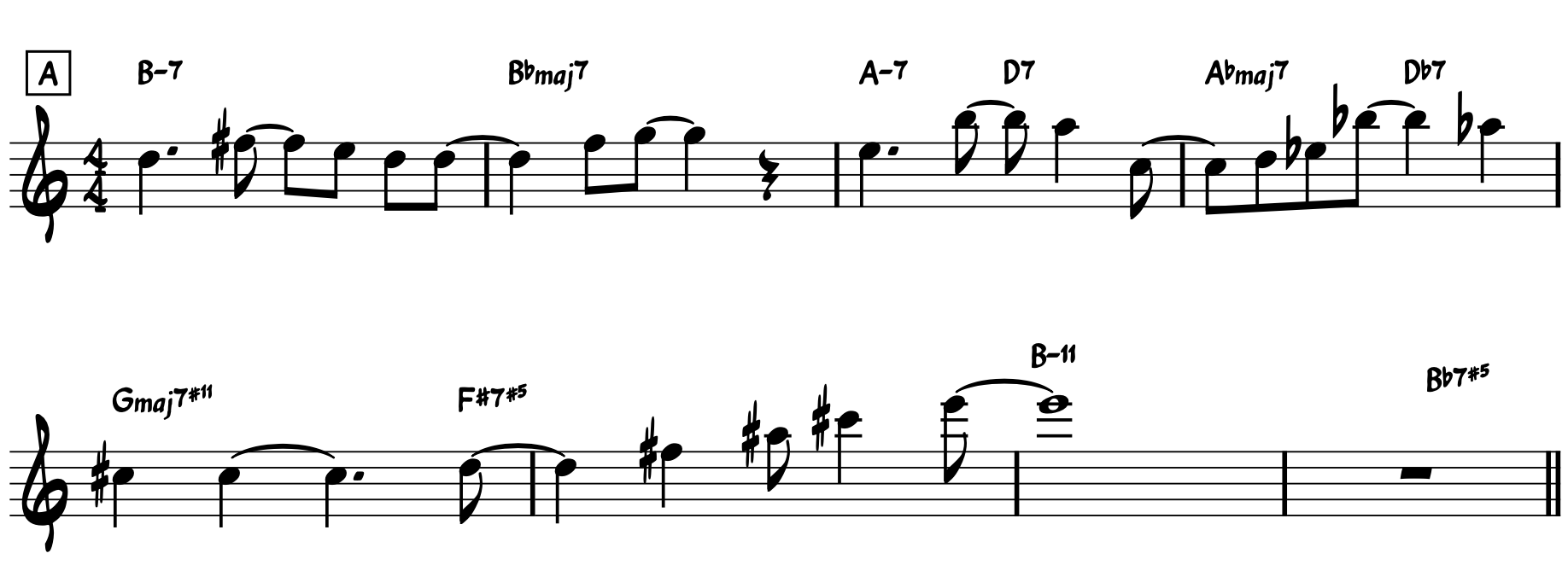
Or, this:
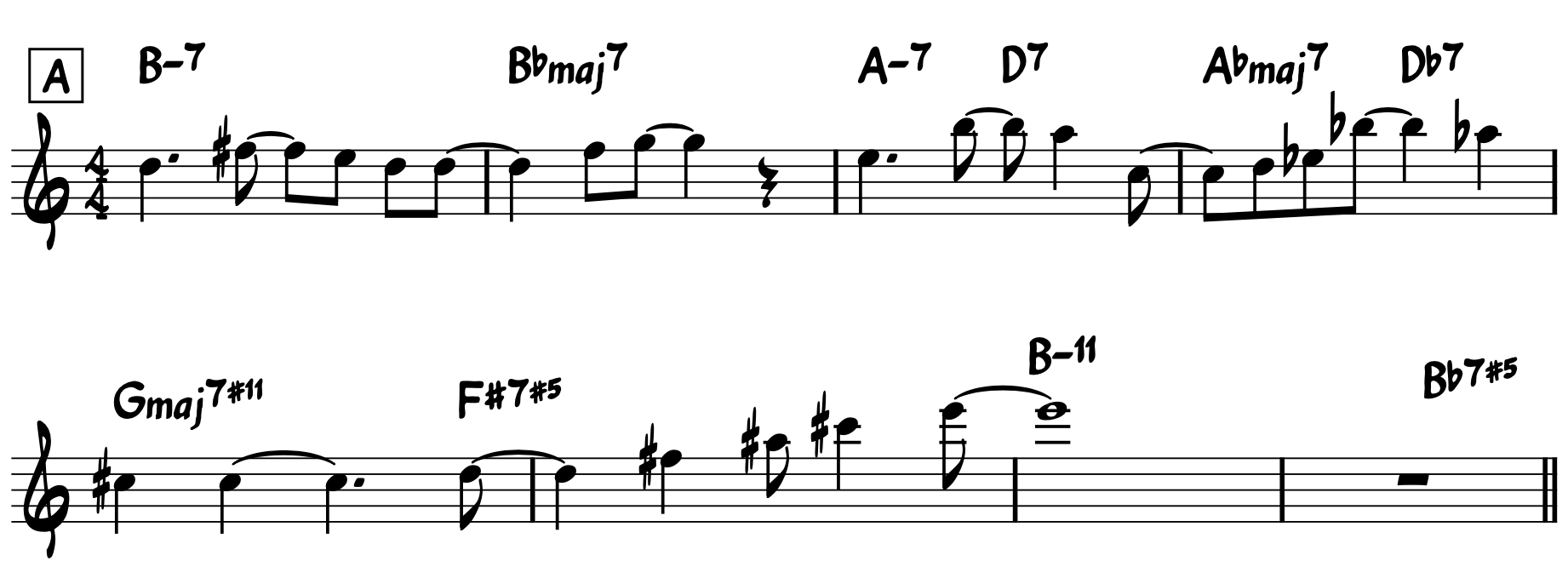
When contemplating the size of your chords, you always want to err on the side of too big rather than too small. You can’t always control the environment your lead sheet will be played in, but you can give other musicians the best chance of being able to read it.
The Story Behind the Real Books and Fake Books in Jazz
If you’re learning jazz, chances are you’ve heard about the Real Book and the Fake Book. These compilations of lead sheets are a big part of the history of jazz and how it’s taught academically.
But what exactly are they, and where did they come from?
The Fake Book:
Long ago, before the internet and smartphones, musicians needed a way to learn new songs for gigs quickly. They began creating “fake books,” which are collections of lead sheets for many different songs from many different styles of music.
These make-shift, hand-written lead sheets typically included only the melody and jazz chords, not the full arrangements.
The original fake books were often illegal, hand-written copies of copyrighted songs passed around among musicians.
The Real Book:
In the 1970s, a group of Berklee College of Music students decided to make a better fake book. They called it the “Real Book,” a bit of a cheeky name since it was just as illegal as the other fake books. However, the Real Book became very popular because it was more accurate and easier to read than the old fake books.
It focused on jazz standards, the classic songs every jazz musician should know.
The Real Book (and fake books generally) have played a big role in jazz education. They’ve helped countless students learn the jazz repertoire quickly and easily. But they’re also a bit controversial.
The Controversy of Only Learning Jazz From Lead Sheets
Some teachers worry that relying too much on fake books can prevent students from developing their ears and musical intuition.
Today, legal versions of the Real Book are available, along with apps like iReal Pro, which are all valuable tools for aiding your jazz journey. However, like any tool, they work best alongside other learning methods.
If you use them too much, they become a crutch.
Whether jamming with friends, studying at school, or playing a gig, an accurate lead sheet can be a lifesaver. However, to respect the rich tradition of jazz music and become the best jazz musician you can be, you should prioritize developing your ear.
Ready To Accelerate Your Jazz Playing and Develop Your Ear? Check Out The Learn Jazz Standards Inner Circle.
If your goal is to be the best jazz musician you can be and you are looking for a comprehensive, structured, and proven way of getting there, then you must check out the Inner Circle.
The Inner Circle is made up of a community of jazz musicians who are dedicated to honing their craft. Inner Circle members feed their hunger to be better today than they were yesterday. You’ll have everything you need to reach your full potential through our in-depth courses, practice programs, instrument accelerator courses, and monthly jazz standard studies.






